Our Blog - South Africa Safari - Day 7
What a different a couple hours makes. At breakfast time, the cloud cover was VERY low, but by the time we were leaving, it was starting to clear up nicely.
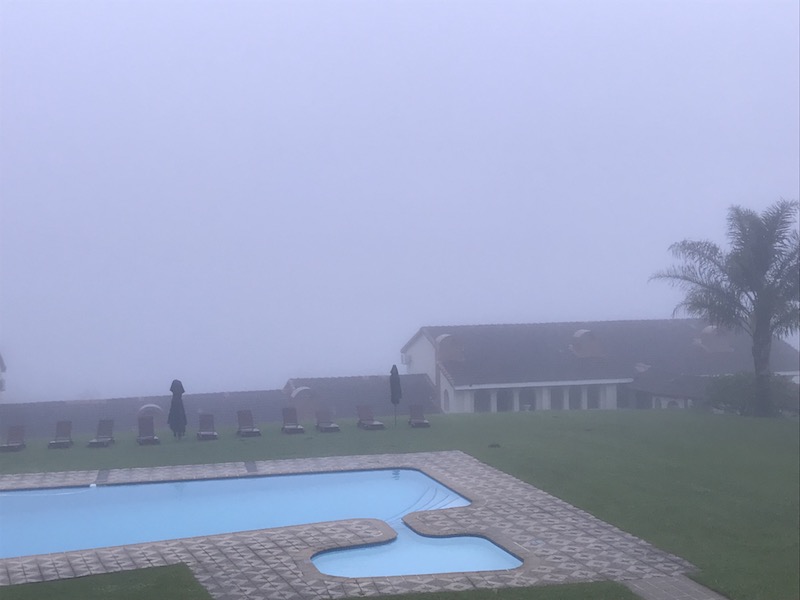

Our first stop was at the Ngwenya glass factory. In 1979, a glassblowing factory was started by a set of Swedish artisans, who taught local Swazi people how to be master glassblowers. From 1981 to 1985, the factory continued and was run entirely by locals. It was closed for 2 years and then it was reopened by a family who tracked down some of the original glassblowers. It has grown from just 4 employees to over 70 workers, including 3 of the original Swazi glassblowers.
The children of Swaziland collect glass, which is recycled by this company. They have a set of glass blowers that create glass animals and tableware from this recycled glass. I'll start with a few pictures of the glass artisans making a wine glass.



Here you can see how he makes the bottom of the wine glass, making sure it is flat.
This one is quite interesting, as I was able to get him taking the molten glass, spinning it, and then blowing air into it.
A finishing step with a set of women who look to be taking the small piece (this one looks to be a giraffe) and holding it on the spinning wheel. I think they were sanding it down slightly to ensure that it is perfectly flat, which they test by putting it on the flat surface.
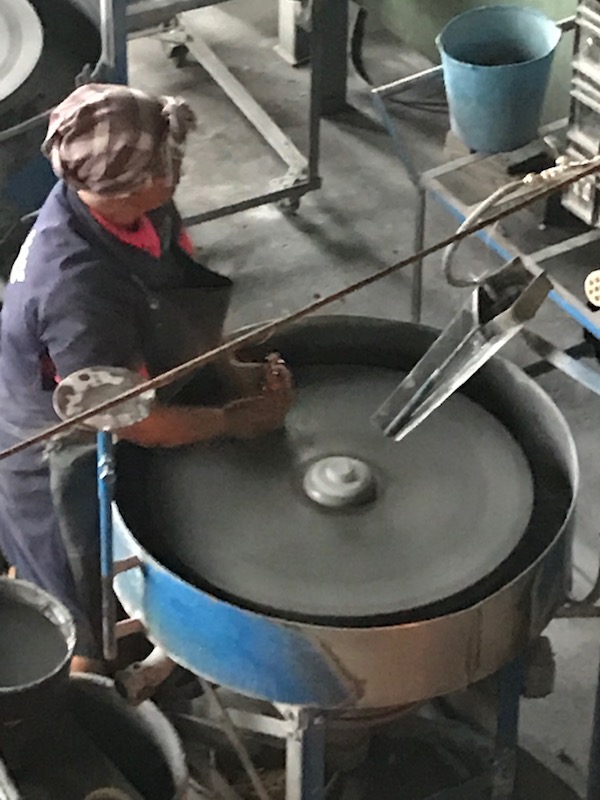
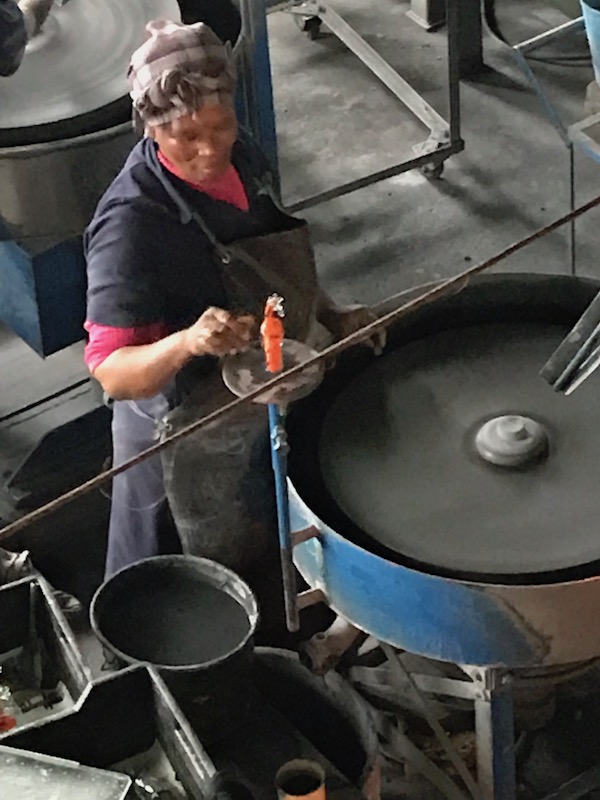
They work a little in an assembly line. First, the initial part of the molten glass is taken from the oven and given the initial shape by rolling it on a flat surface. The first artisan does a little work, then it is handed off to a second person while the first artisan gets another one. It seems he does the exact same work on each piece. At the second station, another artisan (this one in blue) brings over some additional molten glass that gets added to the piece.
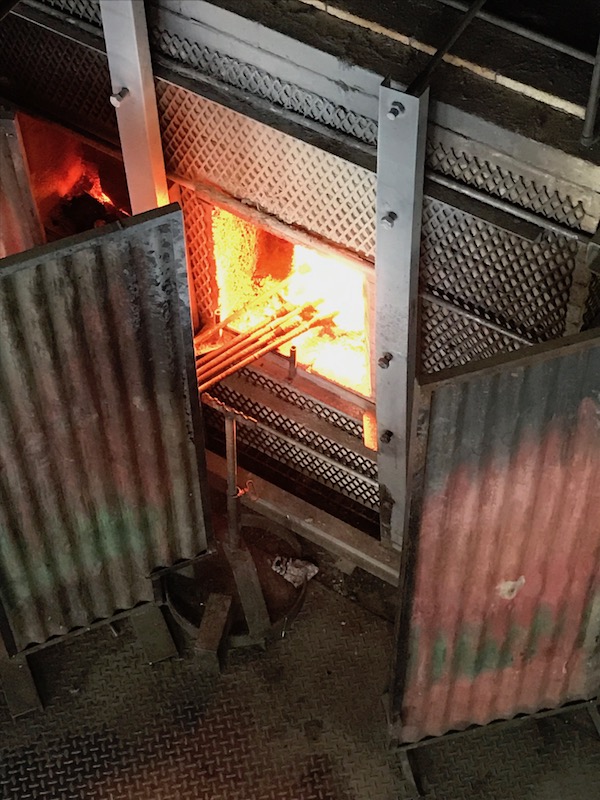
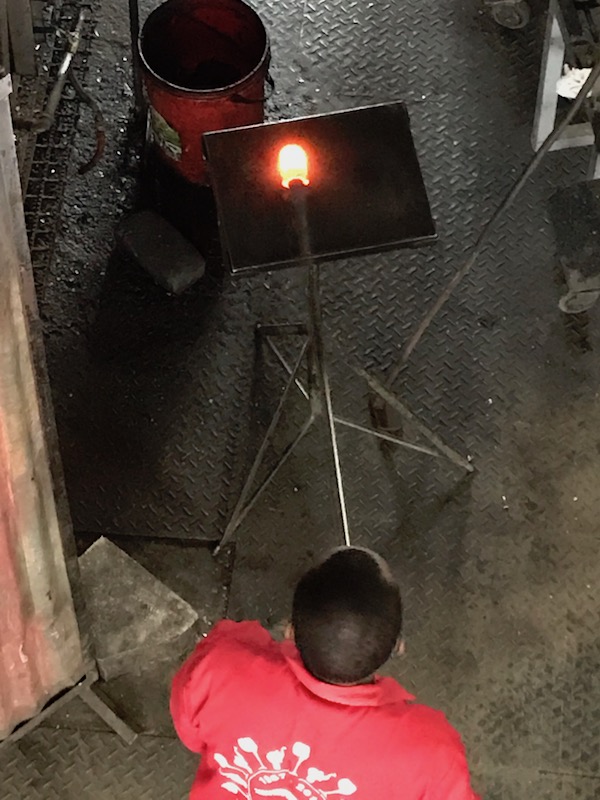
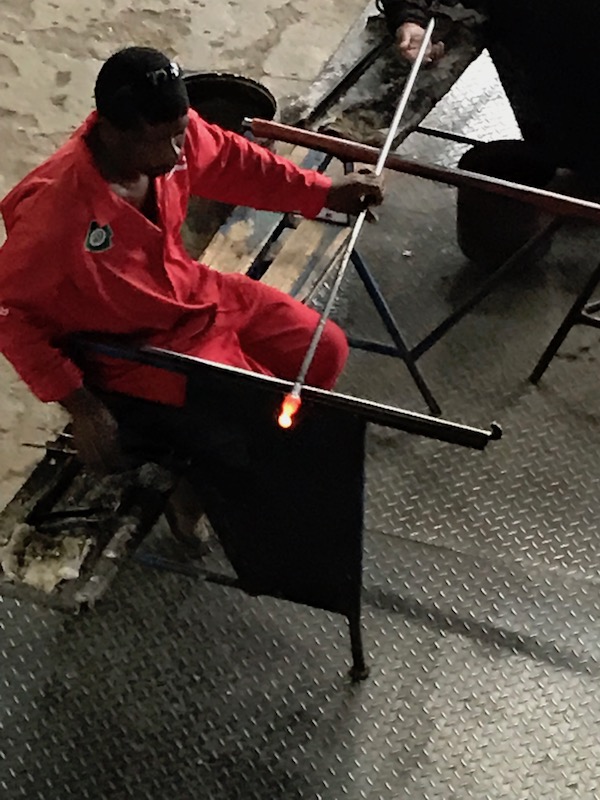

No video, but a set of pictures that show you the progression of one guy who was blowing a large bubble with the glass.
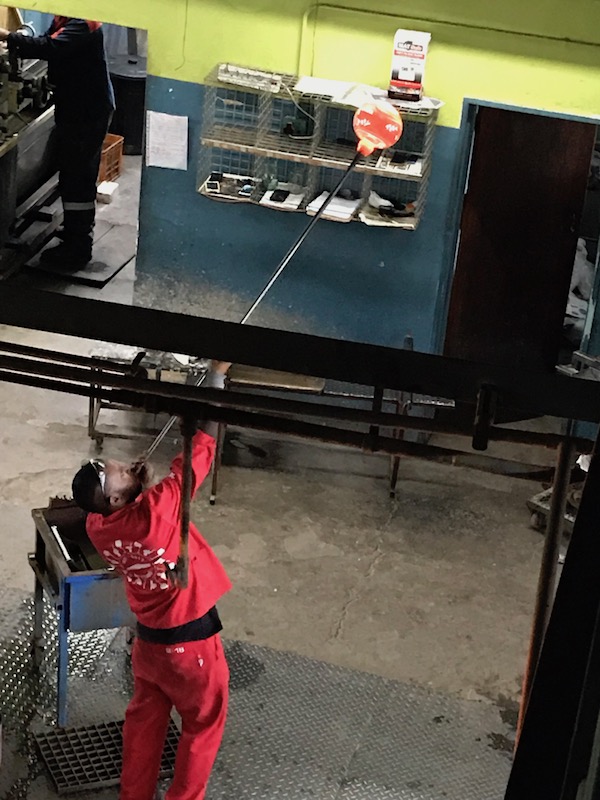
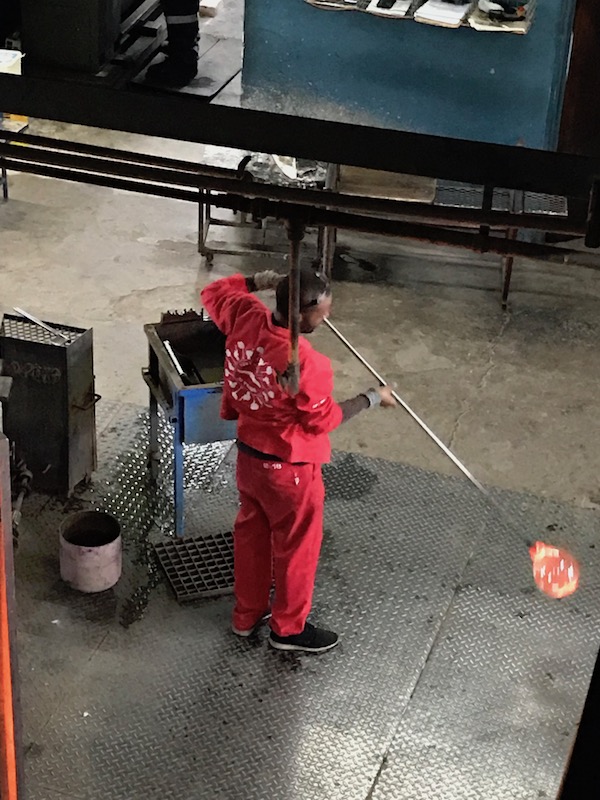


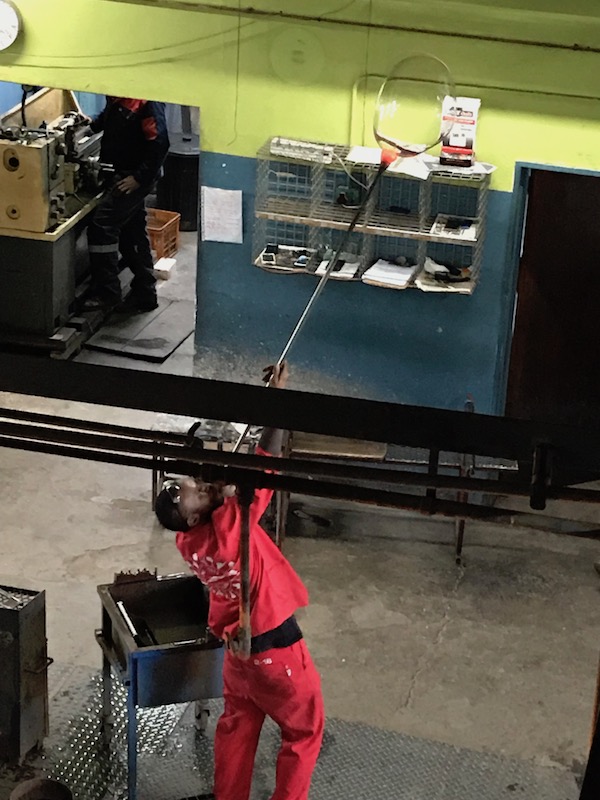
Watching this guy mold the hot glass with a rag was a little scary .... what happens if the rag slips a little.

This last one is just a panorama video of the factory floor.
Just outside, they had a set of peacocks and a few different crafts stores. We picked up a few things here, including a pillow case that we have in our apartment.



As we continued through Swaziland, we saw a huge number of timber farms with both pine and eucalyptus trees. The weather didn't allow me to get the best picture, but you can see the foreground area has been freshly replanted while behind are taller trees. She mentioned that these tree farms have caused some amount of damage to the ecosystem since they soak up the rain, which no longer flows down into the valleys.
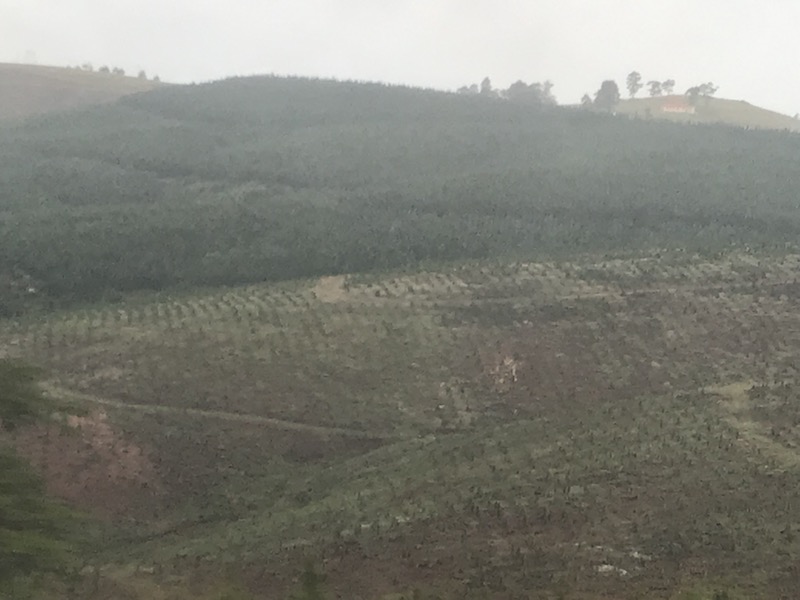
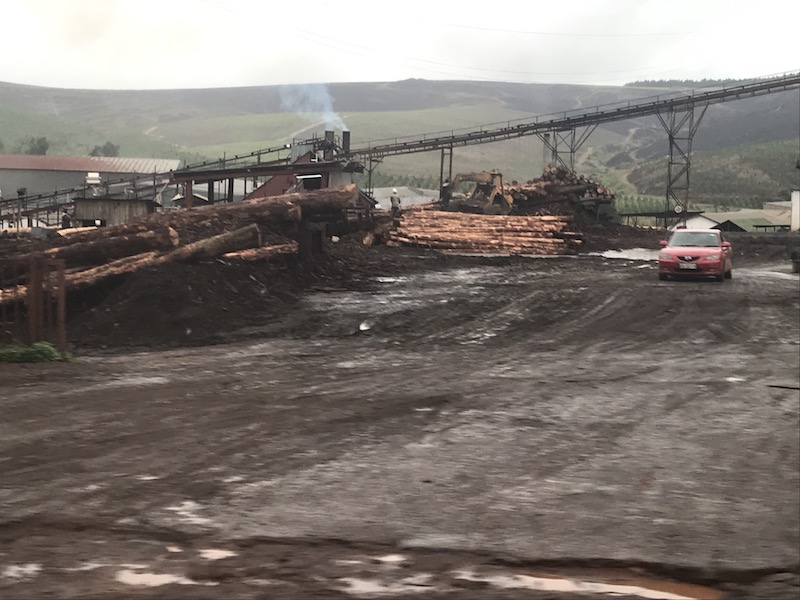
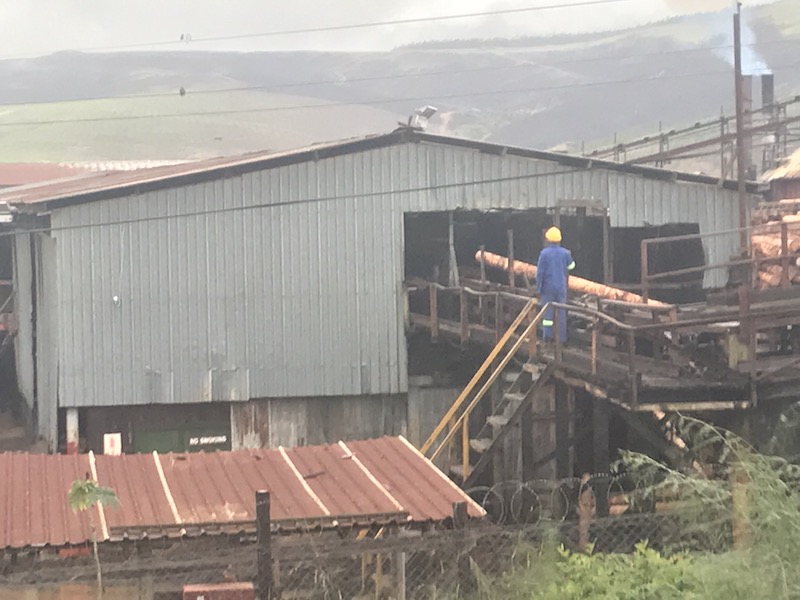
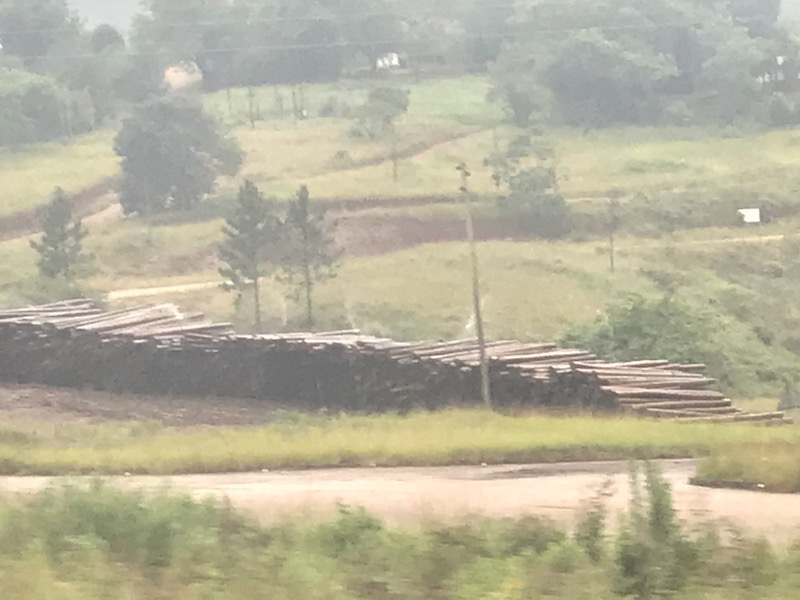
And here we are, leaving Swaziland. We went through the same sort of border control ... out of the bus, each person gets their passport stamped leaving Swaziland, then a short walk up the road to get our passports stamped as we enter South Africa again.
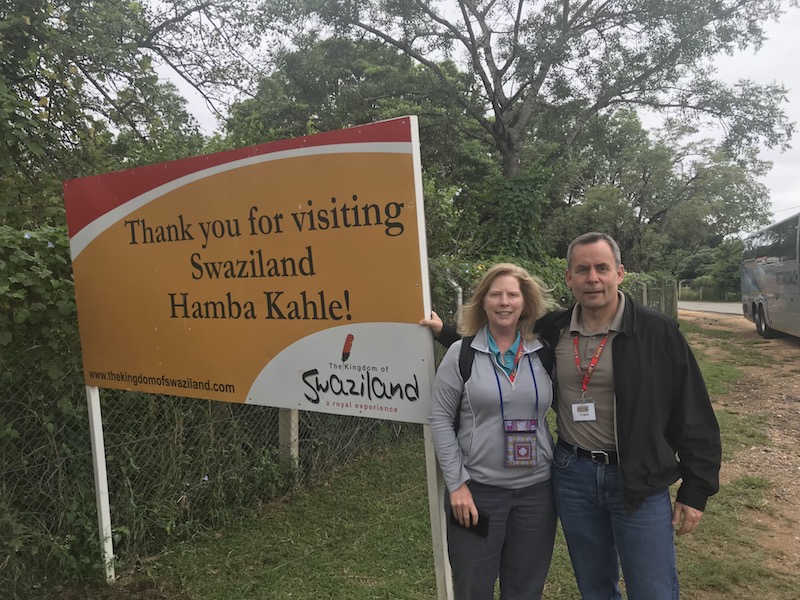
At the Matsamo Cultural Village , we learned about traditional Swati traditions and customs. Our guide brought us into the village and spoke about the construction of the huts and how the families live together within the compound. I tried to get a good picture inside of one of the huts to show the structure underneath the thatched roof.
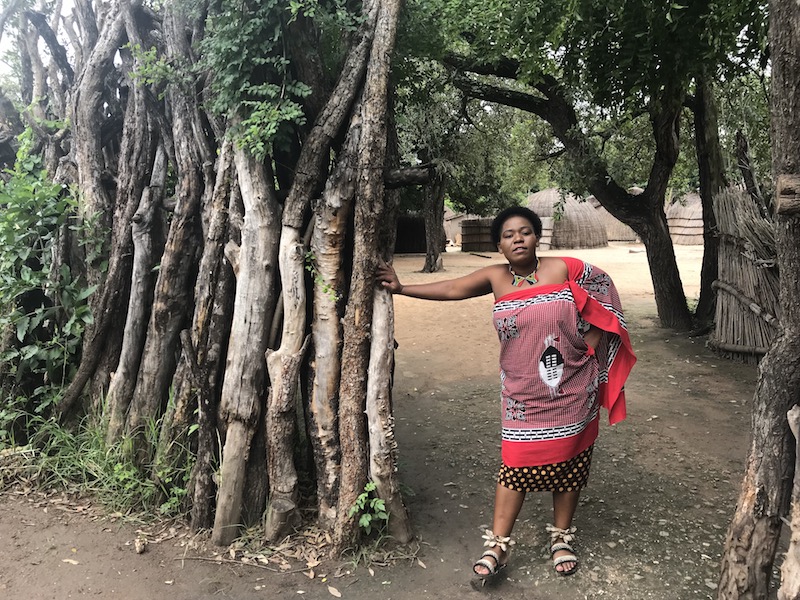

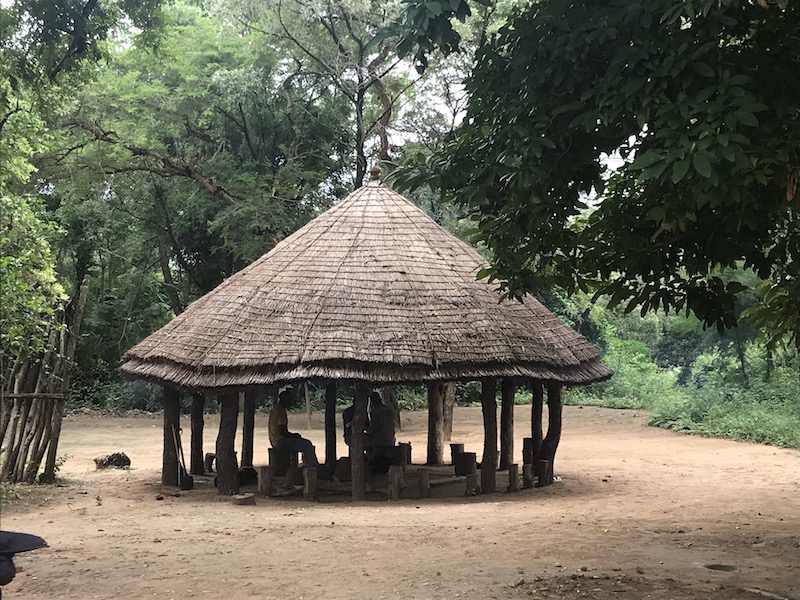
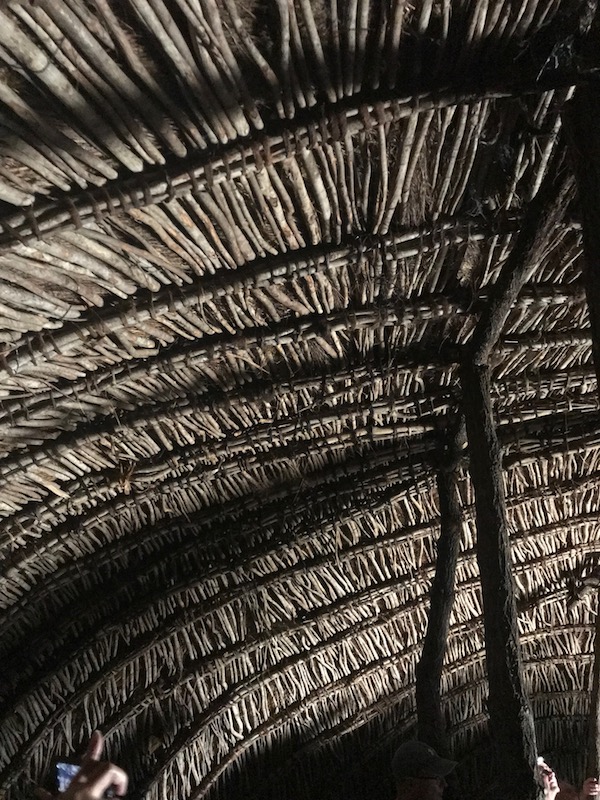
Then we went over to watch and listen to native Swati music, singing, and dancing.
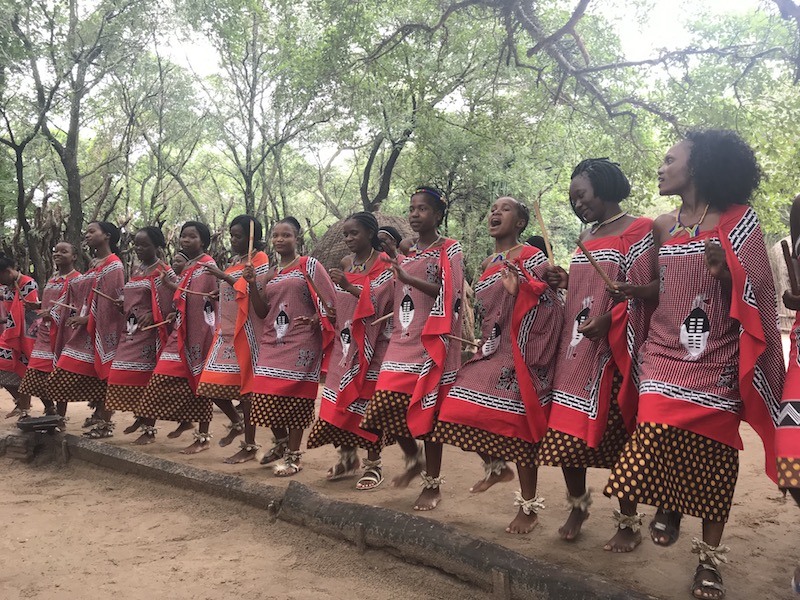


If you look closely, you can see that the first lady on the right has a different top and different skirt than the other ladies. This is because she is already married and therefore, wears a "married" outfit, while the others are single and the clothes that they wear indicates this.
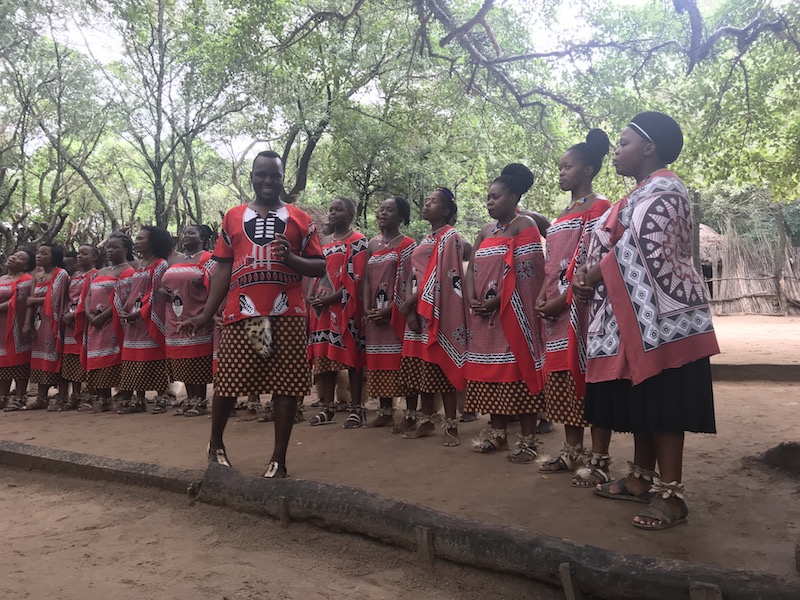
First are the married ladies with the younger girls playing the drums in the background.
Then the younger girls got their turn, with some dancing where they kick a leg very high.
Now the guys, who seem to do a lot of pounding the ground with their feet and in some cases, also are kicking very high.
I got selected to take part in the dance and Tom grabbed a couple pictures of me.
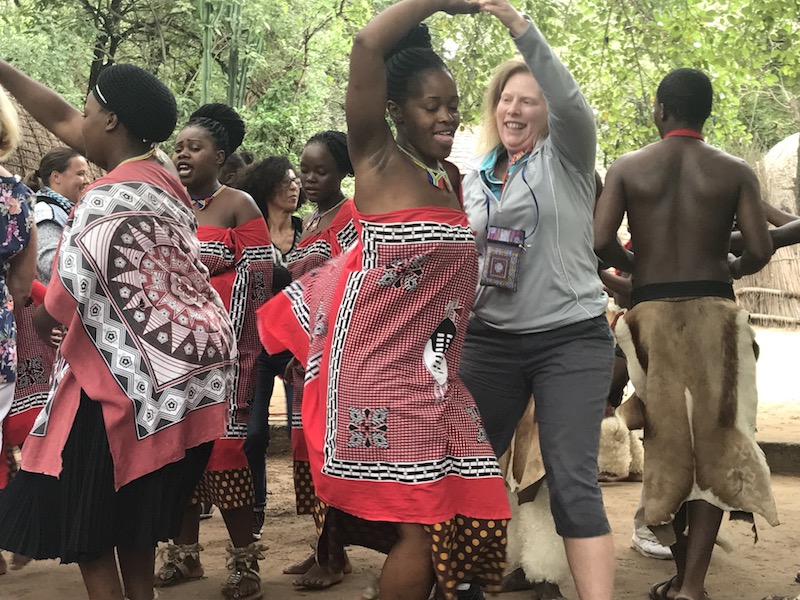
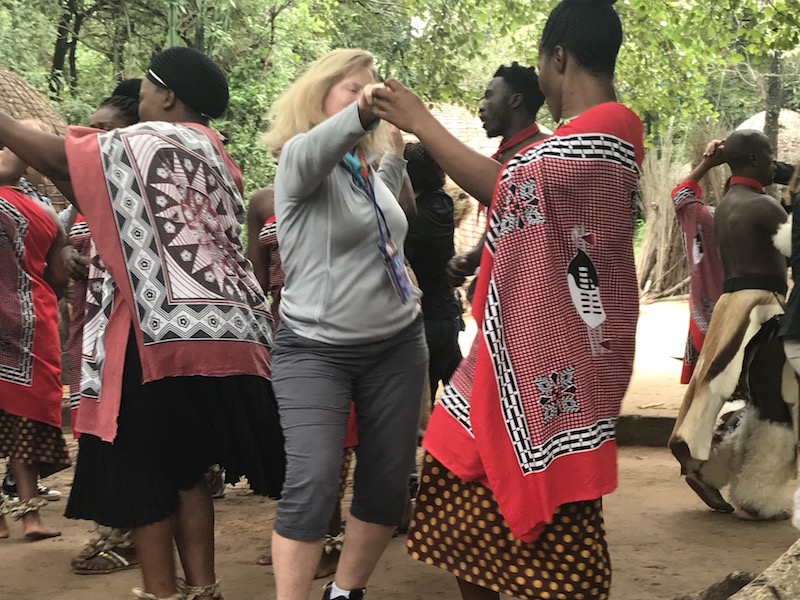
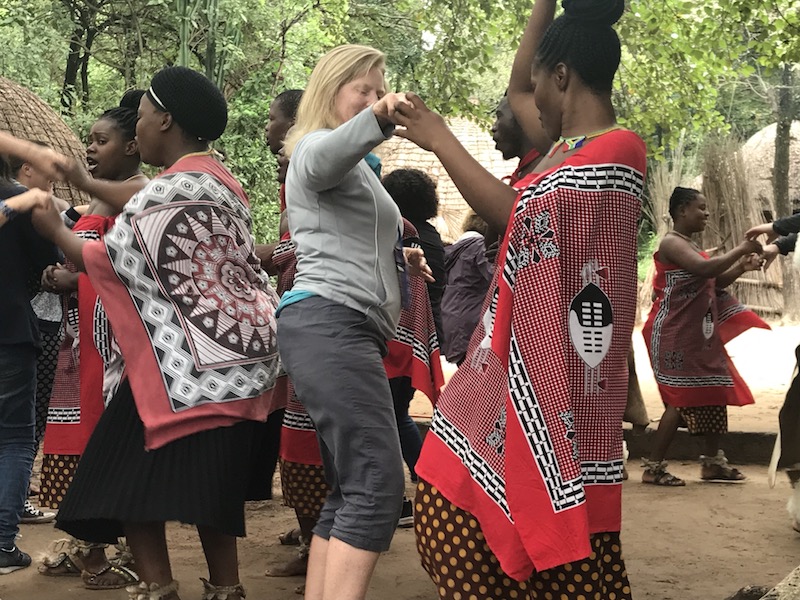
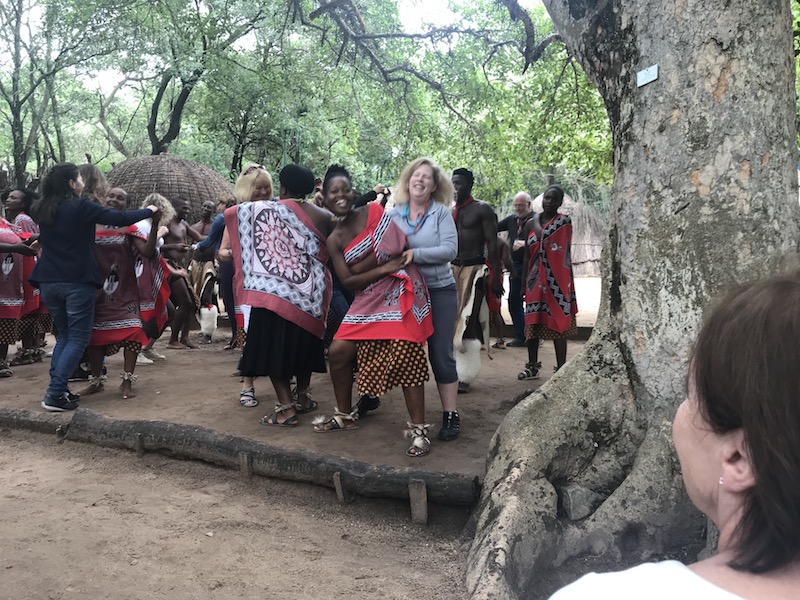
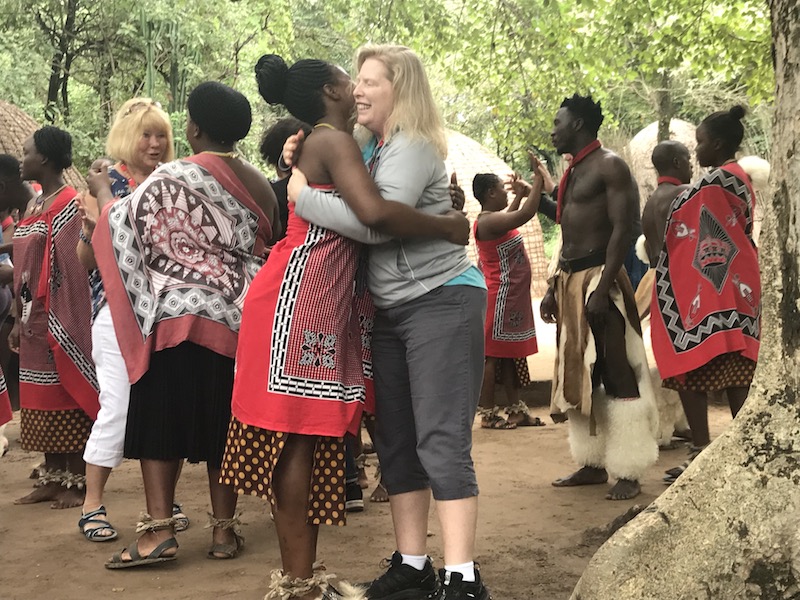
We made it to our hotel and got to see a Cycad - one of oldest plants on earth dating back to prehistoric times. We had a nice hotel in Hazyview, on the outskirts of Kruger National Park, with a pool (still too cold) and thatched-roof buildings.
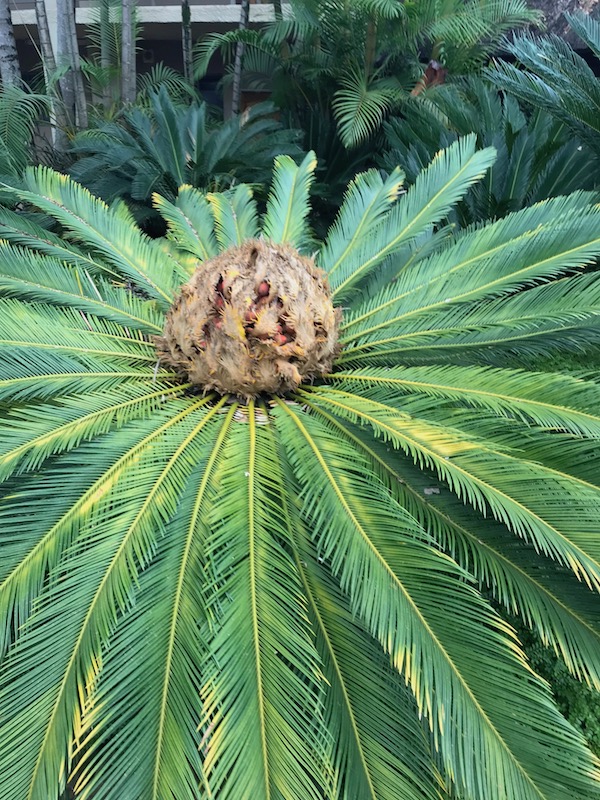
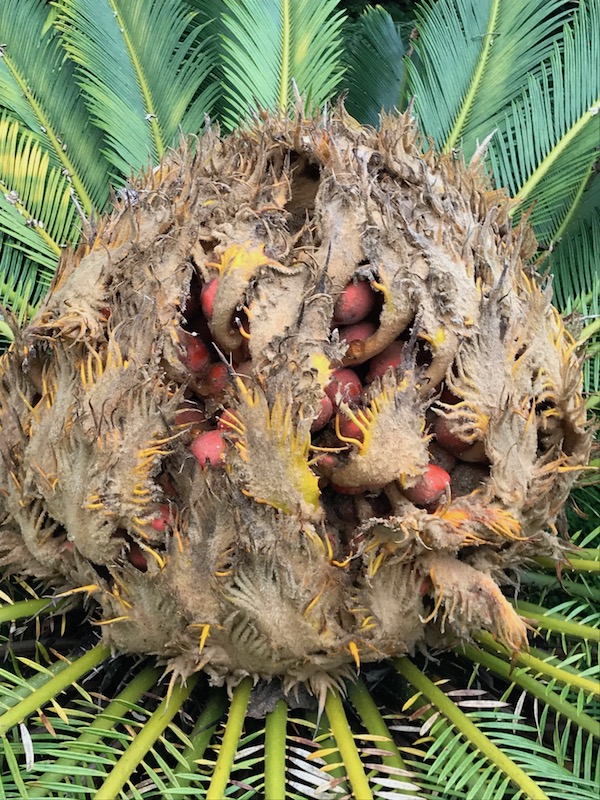
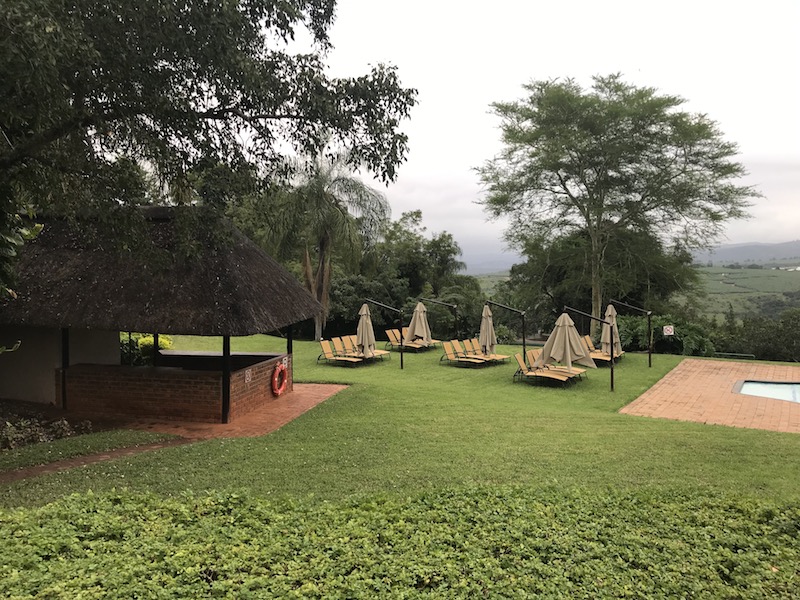
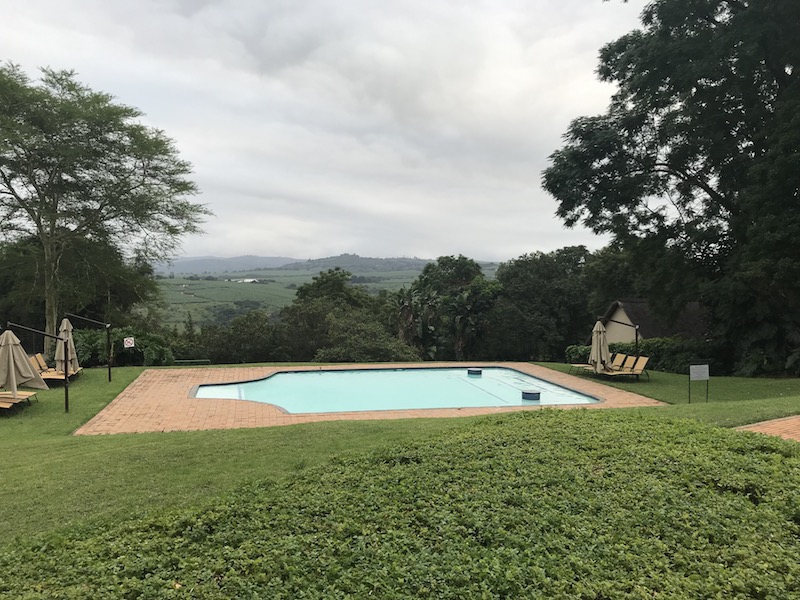

You can go back to the main Safari page or continue on to Day 8